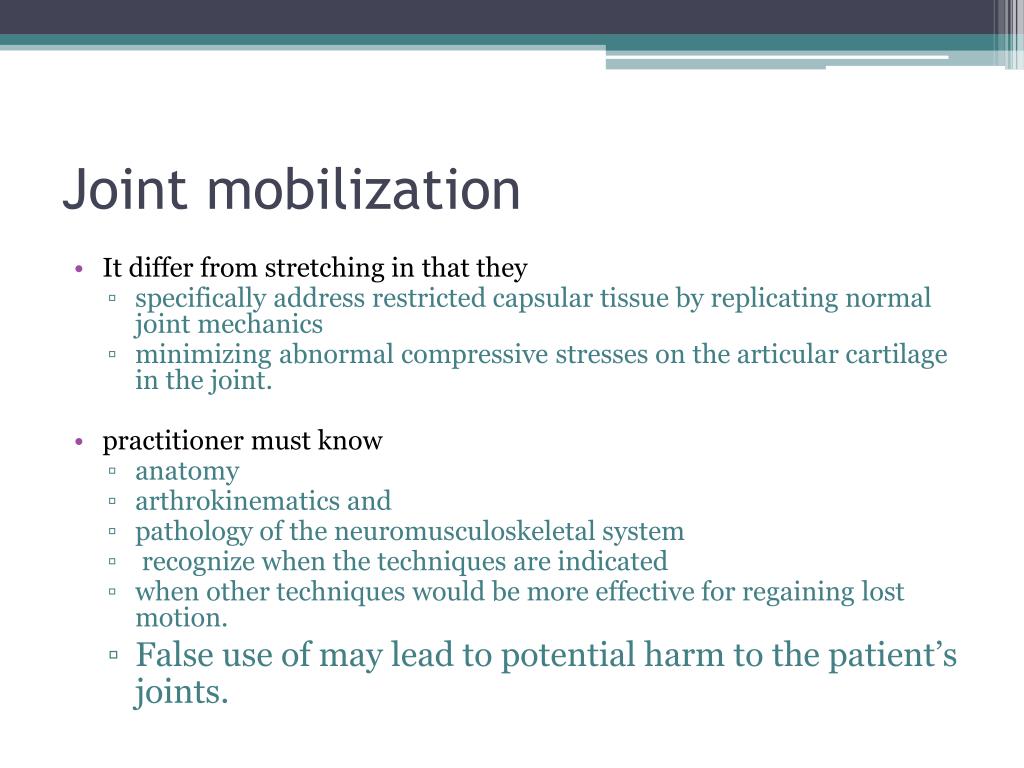
Enhancing Flexibility and Mobility through Effective Joint Mobilization Techniques
Maintaining optimal joint health is crucial for overall well-being, and joint mobilization techniques play a key role in achieving enhanced flexibility and mobility. Whether you’re an athlete looking to improve performance or someone seeking relief from joint stiffness, understanding and incorporating these techniques into your routine can make a significant difference.
Understanding Joint Mobilization
Joint mobilization is a manual therapy technique used by physical therapists, chiropractors, and other healthcare professionals to address joint stiffness and improve range of motion. It involves skilled, passive movements applied to a specific joint, aiming to restore normal function and alleviate pain.
The Importance of Joint Flexibility
Flexible joints are essential for performing daily activities with ease and preventing injuries. Lack of joint flexibility can lead to stiffness, discomfort, and even contribute to chronic conditions such as osteoarthritis. Incorporating joint mobilization techniques into your wellness routine can contribute to maintaining and improving joint flexibility.
Types of Joint Mobilization Techniques
There are various joint mobilization techniques, each catering to specific needs and conditions. Oscillatory movements, sustained stretches, and accessory joint movements are common approaches. Your healthcare provider will tailor these techniques based on your individual requirements, considering factors like joint condition, age, and overall health.
Benefits of Joint Mobilization
Beyond addressing joint stiffness, mobilization techniques offer a range of benefits. Improved circulation, reduced inflammation, and enhanced synovial fluid production are some advantages. Additionally, joint mobilization can positively impact the nervous system, providing pain relief and promoting relaxation in the surrounding muscles.
Incorporating Joint Mobilization into Your Routine
While joint mobilization is often performed by healthcare professionals, certain techniques can be incorporated into your self-care routine. Gentle stretches, controlled movements, and range-of-motion exercises can contribute to maintaining joint health. It’s essential to learn these techniques under professional guidance to ensure safety and effectiveness.
Seeking Professional Guidance
For a more targeted and personalized approach, consult with a healthcare professional experienced in joint mobilization. They can assess your specific needs, identify areas of concern, and develop a tailored plan to address your joint health goals. Regular sessions may be recommended to track progress and make necessary adjustments.
Joint Mobilization for Athletes
Athletes, in particular, can benefit significantly from incorporating joint mobilization into their training regimen. Improved joint flexibility can enhance performance, reduce the risk of injuries, and contribute to a quicker recovery after intense workouts. Integrating these techniques into warm-up and cool-down routines is a proactive approach for athletes.
Joint Mobilization and Aging
As we age, joint mobility tends to decline, leading to stiffness and reduced range of motion. Joint mobilization becomes especially valuable for older individuals seeking to maintain an active lifestyle. Regular sessions can help manage age-related joint issues and improve overall quality of life.
Complementary Therapies and Joint Health
In addition to joint mobilization, exploring complementary therapies can further support joint health. Practices such as yoga, Pilates, and aquatic exercises can complement the effects of mobilization techniques, promoting overall flexibility, strength, and balance.
To delve deeper into effective joint mobilization techniques and discover personalized approaches for your joint health, explore resources at Joint Mobilization Techniques. This platform offers valuable insights, expert advice, and products to support your journey toward enhanced flexibility and mobility.
In conclusion, prioritizing joint health is an investment in your overall well-being. Whether you’re addressing existing joint issues or aiming to prevent them, incorporating joint mobilization techniques into your routine can contribute to a life of increased flexibility, reduced discomfort, and improved mobility.